#Hybridmulticloud
Explore tagged Tumblr posts
Text
iPaaS & Hybrid Future: Easy Integration Allows Innovation
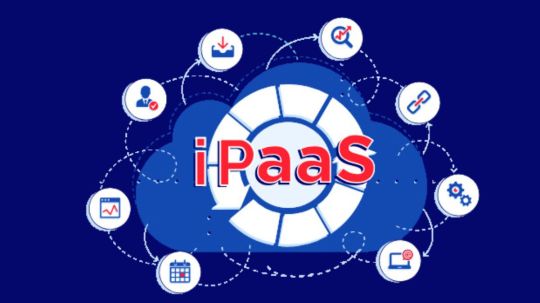
Innovation necessitates an iPaaS approach and a hybrid future.
The next paradigm shift from digital transformation to AI transformation depends on effectively using integration, APIs, events, and data. There are numerous automation and integration methods, but all lead to Integration platform as a service(iPaaS).
In the meanwhile, integrating the required data, applications, and systems is a shifting target. Since apps constantly being updated to the cloud and replaced, the only thing that is constant is change. Furthermore, IDC projects that by 2028, there will be 1 billion new logical applications, partly due to AI. The significant investment in the iPaaS sector is supported by these factors.
This are combining cutting-edge technology from the IBM and webMethods integration portfolios at a time when the market is so innovative and full of opportunities. It goal is to assist company executives in using integration as a competitive advantage via the investments and innovations.
Using experience to create a cohesive hybrid future
It has to be hybrid in order to manage cloud and on-premises installations with ease. Additionally, it has to be unified, combining various integration models with common governance, control, and portability. By combining to knowledge of hybrid and multicloud integration, it is enabling the customers to increase productivity for all individuals and teams involved in integration across their companies. When implemented properly, iPaaS controls complexity to enable businesses to prosper.
With hybrid control at its heart, it use a single control plane to integrate various integration patterns (such files, events, messaging, B2B, apps, APIs, and more) into a shared experience. Your whole integration landscape can be controlled via a single pane of glass, spanning all regions, hybrid multicloud hosting infrastructures, user personas, and teams, with to central management with distributed execution. The most complete platform to manage every use case you can think of is provided by a unified iPaaS.
Using AI-powered solutions to propel iPaaS innovation
Additionally, It have the benefit of being able to provide AI-driven integration solutions that are unrivaled in the iPaaS field because to IBM’s dominant market position in responsible AI, powered by Watsonx. Generative AI may contribute to the whole integration lifecycle, enhancing existing product AI capabilities and promoting productivity and agility in writing, monitoring, and governance for quick innovation. AI assistants are a fantastic place to start, and its’re now using AI agent-led hybrid iPaaS to map a route.
With the realization of this idea, hybrid iPaaS could:
Eliminate integration islands by integrating applications, data, APIs, B2B, files, and event streams into a single platform.
Use a hybrid strategy that connects mainframes and multicloud systems to streamline integration across the company.
Use centralized control and distributed execution runtimes to help guarantee security and data sovereignty.
Throughout the integration lifecycle, generative AI may accelerate typical integration processes, enabling a variety of users to create solutions for their businesses and boosting productivity and agility.
Use events and APIs in conjunction with a modular business architecture to update apps.
By offering a worldwide library that permits reuse and self-service access to current connectors, you may speed up development, save expenses, and enhance data accessibility.
How does iPaaS integration work?
Organizational leaders evaluate integration requirements and objectives prior to selecting and deploying an iPaaS solution. Apps, data storage, microservices, event streams, and other connectors may be made using it platforms. There is seldom an out-of-the-box iPaaS solution that will work for everyone since various iPaaS services are designed to handle different integration requirements and enterprises have varied IT infrastructures.
Teams may choose an iPaaS provider that fits the requirements of the company and start the setup process after identifying integration use cases. Here is an example of how an iPaaS data integration may operate, however initial iPaaS setup procedures will differ depending on it the service a team employs and the kinds of connections they want to make.
Initially, the user must utilize the iPaaS platform’s connectors and templates to link the systems that need integration. For example, a store may decide to integrate a cloud storage service, a customer relationship management (CRM) system, and an enterprise resource planning (ERP) system.
The user may create integration flows, which specify the order of activities (such as taking data from one system, changing it, and moving it to another system), once the systems are linked. The conversion, aggregation, and enrichment procedures that will control the transformation and mapping of data across systems are also specified by users at this point.
The data interchange is then orchestrated by the iPaaS platform, guaranteeing safe, end-to-end data delivery to apps that consume the data or to data lakes and warehouses for further analysis. It will handle authentication, manage API calls, and ensure safe data sharing if the integrations rely on application programming interfaces (APIs).
Teams may monitor dashboards, get alerts, and examine data logs after the linkages are operational to make sure they are operating at their best and that any problems are identified and fixed quickly. Furthermore, a lot of iPaaS solutions are made to expand with the company; as data quantities increase or new systems are introduced, the platform may be set up to roll out more resources.
Companies may also decide to have their own IT teams develop unique integrations. Depending on company requirements, some degree of customization may be required; nevertheless, where feasible, it is often simpler and more economical to rely on third-party iPaaS solutions.
Read more on govindhtech.com
#iPaaSHybridFuture#EasyIntegration#AllowsInnovation#ibm#iPaaS#hybridmulticloud#generativeAI#applicationprogramminginterfaces#API#ai#technology#technews#news#govindhtech
0 notes
Text
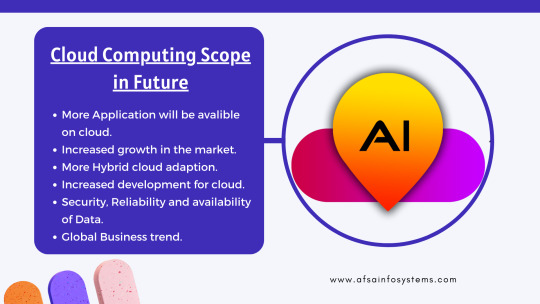
Cloud Computing Scope in Future
Visit us:- http://afsainfosystems.com
#AFSAInfosystems#Cloud#CloudComputing#CloudNative#HybridCloud#CloudSecurity#hybridmulticloud#AWS#Azure#GCP#BusinessGrowth#GrowthHacking#development
0 notes
Text
Study Shows Multicloud is Here to Stay, but Complexity and Challenges Remain
Research Reveals Multicloud Deployments are on the Rise but Enterprises Look to Hybrid Multicloud Nutanix (NASDAQ: NTNX), a leader in hybrid multicloud computing, announced the findings of its fourth global Enterprise Cloud Index (ECI) survey and research report, which measures enterprise progress with cloud adoption. The research showed that multicloud is the currently the most commonly used…
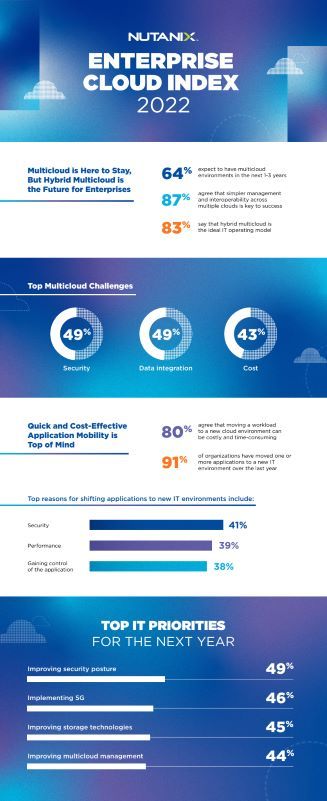
View On WordPress
0 notes
Text
IBM and Forrester Consulting: The Key to...
#Hybridmulticloud #ITinfrastructure #IBM #IBMSystems #Forrester #AskTheCEO
IBM and Forrester Consulting: The Key to...
After reading IBM and Forrester Consulting's #ITinfrastructure study, founder and CEO of #AskTheCEO Media, Avrohom Gottheil, concludes that when it comes to #hybridmulticloud configurations, organizations might benefit more from on-premises. Check out key findings from the study and register for our webinar featuring Forrester Consulting where the full findings will be unraveled.
IBM Get Social Hub
16 notes
·
View notes
Text
IBM and Forrester Consulting: The Key to...
#HybridMulticloud #ITinfrastructure #IBMSystems #IBM The Key to Enterprise Hybrid Multicloud Strategy. Get insights from 350 global IT leaders on how they develop and implement their IT infrastructure strategies.#Forrester #2020Study
IBM and Forrester Consulting: The Key to...
IBM commissioned Forrester Consulting to evaluate how organizations develop and implement their #ITinfrastructure strategies by surveying over 350 global IT decision makers. Make sure to check back for the big reveal of our results, in the meantime here's a taste of what we found. Don't forget to register for our webinar featuring Forrester Consulting to learn more
IBM Get Social Hub
11 notes
·
View notes
Text
IBM and Forrester Consulting: The Key to...
IBM and Forrester Consulting: The Key to Enterprise Hybrid Multicloud Strategy #hybridmulticloud #ITinfrastructure
IBM and Forrester Consulting: The Key to...
Think you've seen it all when it comes to #hybridmulticloud strategies? Think again ��Managing Director at The Future as a Service, Neil Cattermull , gives us his thoughts after reading IBM and Forrester Consulting's #ITinfrastructure study. Check out the key findings and register for our webinar featuring Forrester, where the full results will be unraveled.
IBM Get Social Hub
1 note
·
View note
Text
CIO Insight: 3 top takeaways on cloud security
With #security being the hot topic of the day, it’s hardly surprising it was a key focus of the Sydney #CIO Virtual Executive Summit run by Gartner's Evanta. Chris Chelliah, SVP of customer strategy, insight and business development at Oracle JAPAC shares his top three takeaways. #hybridmulticloud #innovation
CIO Insight: 3 top takeaways on cloud security
Oracle JAPAC's Chris Chelliah shares 3 key takeaways from a recent CIO summit focused on security.
Oracle Champions
0 notes
Link
#YottaInfrastructure offers hyperscale Data Center solutions including colocation, #hybridmulticloud, Managed IT and #securityservices.
0 notes
Link
Can your #business harness the full potential of hybrid multicloud? https://t.co/rTQ4Jb0GId#CloudComputing #EnterpriseSolution #ITinfrastructure #HybridMulticloud #HybridCloud #ClouddSolution #ITServices #businessowners #Mompreneurs #Enterpreneurs #DevOps
— TD Web Services (@TDWebServices) July 10, 2020
via: https://ift.tt/1GAs5mb
0 notes
Text
Hybrid multicloud strategy it’s techniques
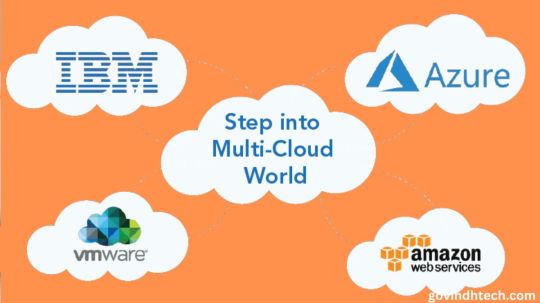
Successful multicloud strategy
Enterprises are using multicloud services to maximize performance, reduce prices, and avoid vendor lock-in. Gartner (link outside ibm.com) predicts that global end-user expenditure on public cloud services would rise 20.4% to $678.8 billion in 2024 from $563.6 billion in 2023. Multi zcloud architecture lets organizations pick the finest cloud products and services for their requirements and accelerates innovation by enabling game-changing technologies like generative AI and machine learning.
Multicloud environments get increasingly complicated as enterprises add cloud services. To succeed with multicloud, enterprises require a thorough multicloud management plan.
Describe multicloud architecture
Multicloud computing uses numerous cloud services from major cloud service providers (CSPs) such Amazon Web Services (AWS), Google Cloud Platform, IBM Cloud, and Microsoft Azure in the same IT architecture.
SaaS software applications like Webex or Slack hosted on the public internet may be provided by two cloud providers in a basic multicloud scenario.
A multicloud solution usually extends beyond SaaS distribution from several CSPs in complicated corporate businesses. An company may utilize Microsoft Azure for data storage, AWS for app development and testing, and Google Cloud for backup and disaster recovery.
Along with SaaS, many contemporary corporate firms use cloud service providers for the following cloud-based computing models, PaaS offers hardware, software, and infrastructure for app development, operating, and management. PaaS reduces the cost, complexity, and inflexibility of on-premises platform development and maintenance.
Infrastructure-as-a-service (IaaS) provides computing, network, and storage capabilities on-demand, via the internet, and for a fee. IaaS lets organizations increase and downsize workload resources without the enormous capital expenses of ramping up conventional IT infrastructure.
The multicloud hybrid environment
Today, multicloud environments are sometimes integrated with hybrid cloud, which combines public cloud, private cloud, and on-prem infrastructure. One flexible IT architecture facilitates workload interoperability and portability across many clouds in a hybrid cloud system. Hybrid multicloud architectures allow enterprises to migrate, construct, and optimize applications across various clouds using the best of both cloud computing worlds.
Modern hybrid multicloud ecosystems use open-source container orchestration platforms like Kubernetes and Docker Swarm to automate app deployment across on-premises data centers, public cloud, private cloud, and edge settings for cloud-native application development. Microservices accelerate software development and deployment for DevOps.
An IBM Institute for Business Value research found that a comprehensive hybrid multicloud platform technology and operating model at scale provides two-and-a-half times the value of a single-platform, single-cloud vendor strategy.
Multicloud challenges?
Multicloud environments are vital to business digital transformation, yet operating numerous clouds and services from various
CSPs is complicated: A major issue with multicloud is cloud sprawl, the uncontrolled expansion of an organization’s cloud services. Cloud sprawl may increase costs and overprovisioning. Overprovisioning increases the multicloud attack surface, making it more exposed to data breaches and cyberattacks and pays for unneeded or neglected workloads.
Silos of data: Organizations risk data silos with data spanning many clouds and platforms. Data silos hinder data analytics by prohibiting teams from sharing a comprehensive picture of aggregated data to collaborate and make business choices.
Security risks: Enterprise cloud usage requires solid security. Complex multicloud environments with data flowing between private and public clouds pose concerns. When using one cloud provider, a business may employ a single set of security measures. However, combining an organization’s internal security tools with the native security controls of platforms from different cloud service providers might fragment security capabilities and increase the risk of human error or misconfiguration.
Uncontrolled costs: Cloud services increase cloud expenses. The pay-per-usage approach for cloud services controls cloud expenditure, but difficulties controlling CSP pricing structures, forgotten data egress fees, and more may lead to unanticipated charges.
8 techniques for multicloud strategy success
Multiple cloud environments and providers complicate technical and administrative tasks. Here are eight essential stages for a successful multicloud approach, however each journey is different:
1. Set objectives
Starting a multicloud journey requires matching corporate objectives with a strategy. Review your company’s infrastructure and apps. Determine business use case workload and objectives.
Hybrid multicloud architectures provide integrated data communication, assuring minimal latency, no downtime, and easy data transfer. A healthcare firm may want a multicloud environment so teams in various locations may exchange data in real time to improve patient care.
2. Choose the finest cloud providers
Most CSPs provide similar core functions, but each has distinct features and services. A multicloud strategy helps you select the finest cloud services for your organization, whether it’s high-performance computing or sophisticated data analytics.
Check service contracts as some cloud providers provide flexible contracts and reduced beginning fees. Make sure IT teams and other stakeholders weigh in on CSP selection.
3. Make one glass pane.
In a multicloud context, APIs from different cloud platforms might hinder visibility. A central dashboard or platform that provides enterprise-wide visibility is needed to fully benefit from a multicloud architecture. This dynamic, secure centralized cloud management platform (CMP) lets IT teams develop, administer, monitor, and control multicloud environments.
4. Take use of automation
IT infrastructure and process automation are key to corporate multicloud models. Organizations may minimize IT staff manual duties using automation solutions. Cloud automation solutions provide a software layer to public or private cloud VMs.
Selecting the finest automation solutions for your company’s cloud management platform helps minimize computer resources and cloud computing costs. Infrastructure-as-code supports multicloud automation with containers and orchestration technologies. IT infrastructure provisioning is automated by IaC using a high-level descriptive coding language. IaC streamlines infrastructure administration, improves consistency, and reduces human setup.
5. Implement zero-trust security.
A recent IBM IBV survey found that the typical firm employs more than eight to nine cloud infrastructure environments, raising security risks and putting sensitive data at risk.
Managing numerous clouds requires zero-trust security, which implies a complex network is constantly vulnerable to external and internal attacks. Zero trust demands several security skills. These include SSO, multifactor authentication, and rules to regulate all user and privileged account access. Multicloud security solutions from major CSPs and other cloud service suppliers assist control risks and maintain reliability.
6. Include regulatory and compliance requirements
Enterprise-level enterprises, particularly multinational ones, must comply with regulatory norms (e.g., the EU’s General Data Protection Regulation, the US’s AI Bill of Rights (link lives outside of ibm.com)) in several nations. Companies in healthcare, energy, finance, and other areas must follow industry laws.
Industry standards violations may compromise sensitive data and cause legal, financial, and reputational harm. Integrating compliance norms and regulations into the multicloud development and deployment lifecycle reduces these risks and builds customer confidence. CSP compliance technologies that automate compliance updates may be integrated into cloud management platforms to assist enterprises meet industry-specific regulatory norms.
7. Optimize costs via FinOps
Multicloud cloud cost optimization plans use methods, methodologies, and best practices to limit expenses. Cloud financial management and culture FinOps enables firms optimize business value in hybrid multicloud settings. Along with FinOps, AI-powered cost-management technologies may boost application performance and optimize cloud expenses.
8. Keep improving your multicloud approach
A successful multicloud implementation never ends. Instead, it adapts to business demands and uses cutting-edge technology. Your company may innovate, remain nimble, and stay ahead by reviewing business objectives and cloud service portfolios.
Multicloud benefits
Single platforms cannot deliver the variety of services and capabilities of a multicloud. Businesses may benefit from Multicloud:
Choose “best-of-breed” cloud computing services to avoid vendor lock-in and its costs.
Get flexibility with the finest cloud services for cost, performance, security, and compliance.
Data, process, and system backups and redundancies prevent outages and assure resilience.
Control shadow IT with multi-cloud visibility.
IBM, multicloud
Companies will use hybrid multicloud solutions for infrastructure, platforms, and apps in the future. In 2027, public cloud provider services will cost $1.35 trillion globally, according to IDC.
IBM helps firms establish effective hybrid multicloud management strategies as a worldwide leader in hybrid cloud, AI, and consultancy. IBM collaborates with AWS, Microsoft Azure, and Google Cloud Platform to provide your company with the finest cloud-based services to compete in today’s fast-paced digital economy.
Read more on Govindhtech.com
#Hybridmulticloud#generativeAI#machinelearning#cloudservices#multicloudarchitecture#MicrosoftAzure#GoogleCloud#technews#technology
0 notes
Photo
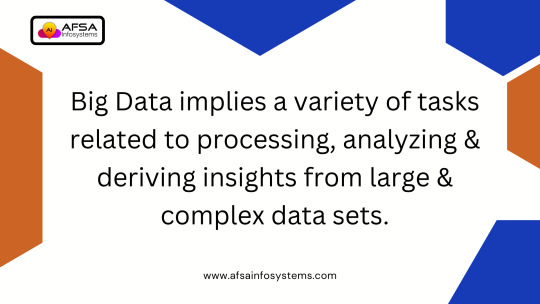
Big Data implies a variety of tasks related to processing, analyzing & deriving insights from large & complex data sets.
Visit us:- http://afsainfosystems.com
#AFSAInfosystems
#Cloud #CloudComputing #cloudsecurity #DataScience #BigData #evolution #MachineLearning #BusinessStrategy #business #GrowthHacking #hybridmulticloud #aws #data #anayliyzing
0 notes
Text
Hybrid IT Infrastructure
Enterprise work environments need the flexibility and operational efficiency that clouds, such as #Azure & #Amazon S3 etc.provides. #Hyperconvergence delivers users the capabilities of the #cloud & builds a unified #hybridmulticloud system.
Learn more: https://stonefly.com/blog/all-you-need-to-know-about-hyper-converged-infrastructure
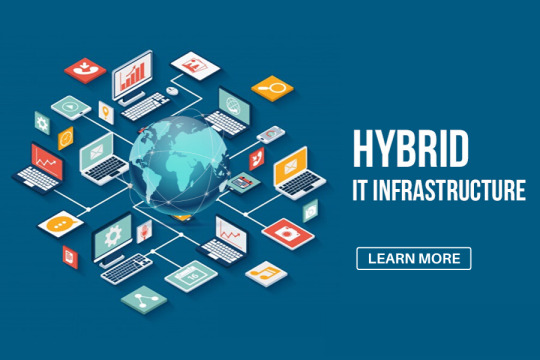
#data#data security#data protection#bigdata#data storage#data center#hyper converged#hyper-converged#hyperconverged storage#hybrid cloud#virtualization#cloud#cloud storage#cloudComputing#cloud backup#cloud services
0 notes
Text
IBM and Forrester Consulting: The Key to...
The Key to Enterprise #HybridMulticloud Strategy. Get insights from 350 global IT leaders on how they develop and implement their #ITinfrastructure strategies #2020Study #Forrester
IBM and Forrester Consulting: The Key to...
You heard it here first ☝��Managing Director at The Future as a Service, Neil Cattermull, shares his thoughts from IBM and Forrester Consulting's #ITinfrastructure study. Check out the key findings and register for our webinar featuring Forrester.
IBM Get Social Hub
13 notes
·
View notes
Text
IBM and Forrester Consulting: The Key to...
#HybridMulticloud #ITinfrastructure #IBMSystems #IBM The Key to Enterprise Hybrid Multicloud Strategy. Get insights from 350 global IT leaders on how they develop and implement their IT infrastructure strategies.#Forrester #2020Study
IBM and Forrester Consulting: The Key to...
What's your opinion about on-premises technology? Managing Director at The Future as a Service, Neil Cattermull, gives his take on on-premises technology after reading the full findings from IBM and Forrester Consulting's #ITinfrastructure study. Read the key findings here and register for our webinar featuring Forrester Consulting, where the full findings will be unraveled.
IBM Get Social Hub
11 notes
·
View notes
Text
The Hybrid Cloud Platform Advantage
Report - The Hybrid Cloud Platform Advantage
The Hybrid Cloud Platform Advantage
Regardless of industry, the average number of adopted cloud environments is set to increase by the year 2023. ☁️ Don't let your organization fall behind. Download IBV's latest #hybridmulticloud report and see for yourself why a hybrid cloud platform is the Guiding Star to Enterprise Transformation.
IBM Get Social Hub
0 notes
Text
The Hybrid Cloud Platform Advantage
The Hybrid Cloud Platform Advantage
Do you know the 5 steps towards achieving a Hybrid Cloud Platform Advantage? Check out IBV's latest report to find a description of all 5 steps and learn how a #hybridmulticloud platform is "The Guiding Star to Enterprise Transformation."
IBM Get Social Hub
0 notes